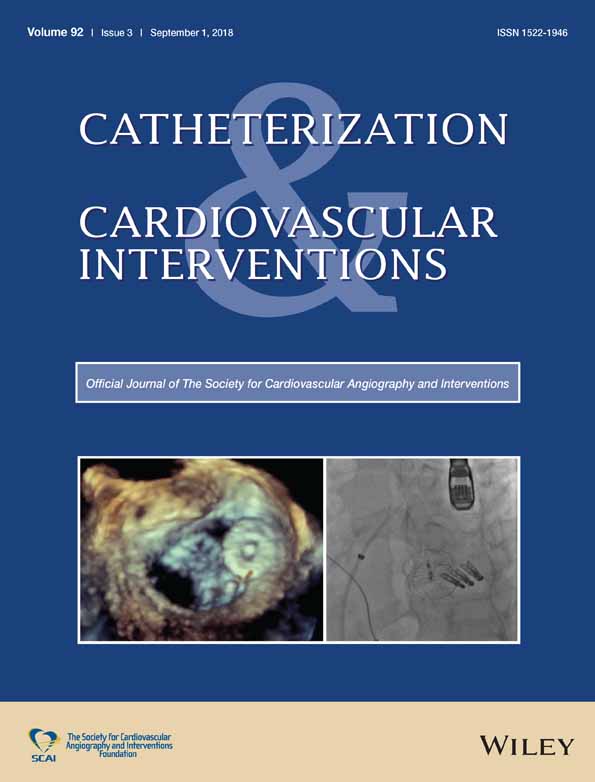Modified jailed balloon technique for bifurcation lesions
Abstract
Objectives
We propose a new systematic approach in bifurcation lesions, modified jailed balloon technique (M-JBT), and report the first clinical experience.
Background
Side branch occlusion brings with a serious complication and occurs in more than 7.0% of cases during bifurcation stenting.
Methods
A jailed balloon (JB) is introduced into the side branch (SB), while a stent is placed in the main branch (MB) as crossing SB. The size of the JB is half of the MB stent size. While the proximal end of JB attaching to MB stent, both stent and JB are simultaneously inflated with same pressure. JB is removed and then guidewires are recrossed. Kissing balloon dilatation (KBD) and/or T and protrusion (TAP) stenting are applied as needed.
Results
Between February 2015 and February 2016, 233 patients (254 bifurcation lesions including 54 left main trunk disease) underwent percutaneous coronary intervention (PCI) using this technique. Procedure success was achieved in all cases. KBD was performed for 183 lesions and TAP stenting was employed for 31 lesions. Occlusion of SV was not observed in any of the patients. Bench test confirmed less deformity of MB stent in M-JBT compared with conventional-JBT.
Conclusions
This is the first report for clinical experiences by using modified jailed balloon technique. This novel M-JBT is safe and effective in the preservation of SB patency during bifurcation stenting.
CONFLICT OF INTEREST
The authors have no conflict of interests to declare.




